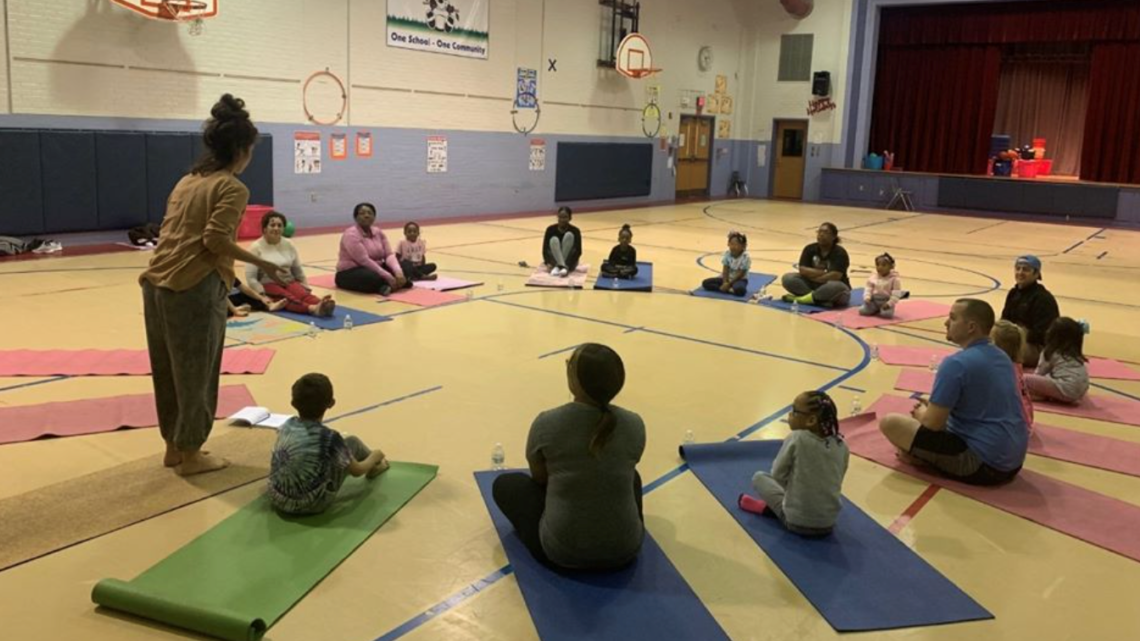Healthy Schools

A healthy school can have a long-lasting positive impact on students. The majority of 5 to 17 year olds in the United States attend 180 days of school a year. During these important developmental years, youth are engaged with school half the time.
A healthy school provides a safe environment for learning, exercising, and eating. Students have access to healthy foods, physical activity, and support growing socially and emotionally. School buildings are managed to keep students and staff safe and comfortable. Many of the action ideas shared on Bay Backpack can make your school healthier. Engage students in this process, it is their school too!
For ideas, check out the resource list below and the following Bay Backpack Action Projects.
Healthy spaces: Safe Air Quality, Stop Vehicle Idling, Safe and Efficient Lighting
Healthy students and staff: Local and Plant-Rich School Food, Safe Drinking Water, Walking and Biking to School, Learn & Play Outside
Connecting to Issue Investigation
Students can take many actions to make their school building and environment healthier. Because of this, there are a variety of investigations that would lead to these solutions. Asking the school community what they would like improved and completing audits (e.g. air quality, school food, outdoor learning, etc.) can be great ways to engage students in hyper-local investigations and students can see and feel the results of their action since it would be impacting them every school day.
For those working towards green school awards, the goal of most of these awards is a healthier school. These actions can reduce a school’s environmental impact and costs; improve the health and wellness of the school, students, and staff; and provide effective environmental and sustainability education.
Facilitating Student Action
Students should continue to have opportunities to share ideas and opinions throughout the process of identifying, planning, and implementing action. Listed here are just a few ways students can stay engaged while working on this solution—but there are many more! The complexity of each activity/task can be adjusted for each grade level.
Restore - students can restore outdoor spaces so they become a safe place to learn and play or restore past initiatives that made the school community healthier like no idling campaigns or purchasing local food for the cafeteria.
Create - students can create new spaces for physical activity and outdoor learning. Students can also create events or initiatives that involve the entire school in becoming healthier like walk to school days.
Educate - students can educate other students, staff, and caregivers about how to make their school day healthier like packing healthy food, exercising, drinking water, taking breaks from computer screens, and avoiding harmful chemicals when cleaning.
Advocate - students can advocate for changes and funding to make their school healthier. They can share their investigation findings and research with school administrators and the school board to argue for support.
Monitor - students can monitor different aspects of the school building (e.g. air quality, electricity use, drinking water quality), physical activity of students (e.g. numbers that walk or bike to school, time spent moving during the school day), and wellness of students and staff (e.g. access to healthy food at school, classroom lighting and temperature). Data collected can be used to inform next steps.
Share and Celebrate - students can share their work with the school community and other schools by giving presentations, creating displays, or writing and delivering morning announcements. Students can also write articles, press releases or invite reporters from the school paper and the local newspaper.
Healthy Schools Resources
Self-assessments can inform action by identifying and prioritizing issues. The School Health Index from the Centers for Disease Control and Prevention (CDC) is an online tool for school staff. The Healthy Schools Pathway for the National Wildlife Federation’s Eco-Schools program is designed for students and includes a variety of audits, from hazardous materials to indoor air quality.
The CDC also hosts a website for healthy schools with resources focused on promoting healthy behaviors, improving school health, and connecting health to academic performance.
The Department of Education is also involved in promoting healthy schools. Search this collection to find resources on specific school issues (i.e. Indoor Air Quality), student health issues (i.e. nutrition) and crosscutting resources that combine issues with academics.
The Healthy Green Schools and Colleges is a program designed for facility management professionals. Students could work with staff to complete the self-assessment and learn how they can make cleaning, disinfecting, purchasing, maintenance and pest management healthier and safer for everyone at the school.
